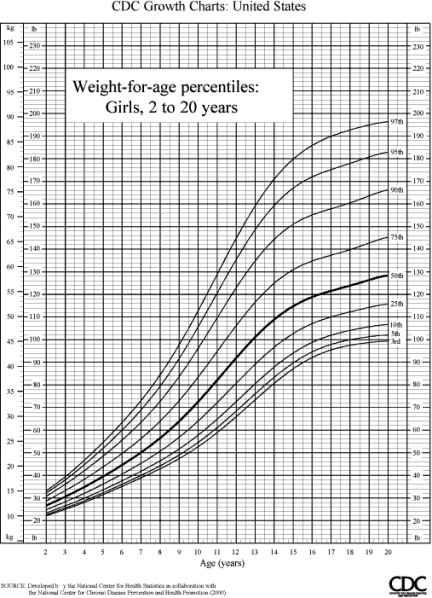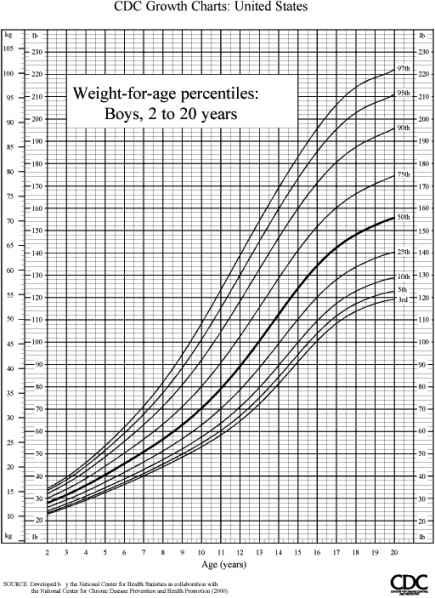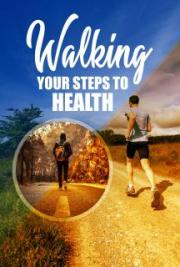Weight Loss Advice For Teens:
Methods That Don't Work
If you are a teenager with weight problems, it's important to stay cool and avoid ineffective or unhealthy ways to lose weight.
During your teenage years, your body develops in many different ways
- not all visible - and good health is essential to ensure this development proceeds smoothly. To help you make the right choices, here are some weight loss methods that DON'T work!
The Teenage Starvation Diet
This diet should be avoided at all costs. Unless recommended and supervised by a physician for the treatment of severe obesity (100+ pounds overweight), any diet which involves a drastic reduction in
calories is likely to be extremely unhealthy, possibly dangerous if self administered.
Starvation Diets Typically Lead to Weight Gain in Teens
Paradoxically, ultra-low calorie dieting among teens usually leads to a gain in weight, rather than weight reduction. After a short period of rapid initial weight loss to combat the fat, the body starts to slow down in order to conserve calories. This is a natural defensive mechanism designed to overcome the effects of a food shortage.
As a result, weight loss slows down. The teen dieter is already experiencing tiredness and lack of energy, as a result of lack of calories. At this point, a combination of hunger, cravings and low mood may trigger an episode of binge eating. Or else the lack of weight loss is usually enough to demotivate the dieter who quits the diet and starts overeating. Repeated attempts to lose weight in this way can lower metabolic rate and make it even more difficult to maintain a normal weight.
Starvation Diets Cause Loss of Muscle
Another problem is that the weight loss which occurs as a result of drastic calorie reduction is highly undesirable. Up to 50 percent of the weight loss is not fat at all, but lean tissue. In other words, the body starts burning up its own muscles. One reason is that fat tissue requires fewer calories to maintain than muscle tissue, so the body retains more fat and burns more muscle.
Health Effects of Starvation Diets Among Teens
The average 11 year old requires a minimum of 1800 calories per day. This rises with age and gender to about 2700 calories per day for 18 year old teenage boys.
The reason that adolescents and teenagers need these calories is to satisfy the nutritional demands of the intense development and growth they experience during this period.
A very low calorie diet (less than 1000 calories per day) can lead to serious nutritional deficiencies, involving extreme tiredness, bone weakness, skin and hair problems, as well as hormonal disorders.
Laxatives Unsafe and Ineffective For Weight Reduction
In a recent survey, 9 percent of teenage girls and 4 percent of teenage boys reported using laxative pills or supplements to lose weight. If you are a teenager with weight problems, please do not resort to this method. Laxatives are neither safe nor effective for weight reduction purposes. Here's why:
• Most of the weight loss is water loss, not fat loss.
By speeding up the digestive process, laxatives can reduce the •
absorption of vitamins, minerals and other nutrients and leave us weak and dehydrated.
• Long-term use of laxatives upsets the mechanism of the colon. This can make us dependent on laxative pills for regular bowel movements. (Colon-cleansing does not cure this problem.)
Fad Diets are Simply Low Calorie Eating Plans
A typical fad diet (eg. cabbage soup diet, grapefruit diet) is a low calorie eating plan with some type of gimmick attached. Some fad diets rely on high intakes of a single food which is supposed to burn fat. (Note: There are no special fat-burning foods.)
Others recommend specific combinations of food that supposedly cause fat to "melt away." There is no truth in any of these fad-diet assertions. The only reason they cause some teens to lose weight is because they are very low in calories. And as we have already seen, low calorie diet plans are very unhealthy and do not lead to long term weight reduction. If you are a teenager who needs to lose weight, please do not waste your time following one of these low energy diets.
Teen Vegetarian Diets
Quite a few girls turn to vegetarian diets in their mid or late teens. As a way of eating, vegetarianism has a lot to recommend it. The trouble is, most teens don't realize that giving up meat makes it much more difficult to eat a healthy diet. The point is, meat is a very convenient source of important vitamins and minerals, especially iron. So if you stop eating meat, you need to eat a wide range of vegetarian foods to compensate for this deficiency. Unfortunately, vegetarian teenagers are not famous for doing this.
How to Lose Weight Successfully If You are a Teenager
Unless you are seriously overweight, the most effective way to reduce weight is to eat healthily and take regular exercise. A healthy body works more efficiently (eg. loses weight more easily) than an unhealthy body.
Amazingly, many teenagers don't choose this tried-and-tested method.
Instead, they prefer "instant solutions" to their weight problems solutions which typically cause ill-health and weight gain.
Whatever you do, don't fall into the trap of looking for "instant solutions" to your weight concerns. Most of these solutions cause weight gain, not loss. Over the past 10 years, I've talked with tons of young people personally, and helped a very high proportion of them to lose weight. I can't change your weight for you - only you can do this but I will help you to make the right decisions that will help you to achieve the weight you want.
Just as important, I'll tell you about the weight loss methods that DON'T WORK. Trust me. Click here to know more proven tips and
strategies to teenagers weight loss recommended by the
leading industry experts.
“ You een we gh p ob em hou d no be aken gh y The effects t has on the r future success and more mportant y the r future hea th depend upon you a on oday
D on make he m ake o pu ng o ome h ng h mportant The ou ome an be a a oph and you een de e ve be e Ge "The Gu de To He p Your Teenager Loss We ght" now and a bu d ng up you een u u e!”
Body Mass Index is the standard medical method of assessing healthy weight, overweight and obesity. It uses height and weight data. BMI is calculated by dividing your weight in kilograms by the square of your height in meters. The BMI formula (in pounds/inches) is:
Your Weight (in pounds) x 704.5 divided by Your Height (in inches) x Your Height (in inches)
Interpreting Your BMI
• If your BMI is 19 to 24.9 you have a healthy weight.
• If your BMI is 25 to 29.9 you are considered to be overweight and may incur moderate health risks.
• If your BMI is 30+ you are considered to be obese. Obesity is linked to increased risk of cancer, heart disease and other health problems.
To determine your Body Mass index and see whether you are inside the healthy weight range for your height, use the Body Mass Index Cart (see Figure 1. below).
Find the intersection between your weight in pounds (top row) and height (left hand column). The number located at the intersection is your BMI number.
Figure 1. Body Mass Index Chart
Weight 100 105 110 115 120 125 130 135 140 145 150 155 160 165 170 175 180 185 190 195 200 205 210 215(lbs.)Height
5'0" 19 20 21 22 23 24 25 26 27 28 29 30 31 32 33 34 35 36 37 38 39 40 41 42
5'1" 18 19 20 21 22 23 24 25 26 27 28 29 30 31 32 33 34 35 36 36 37 38 39 40
5'2" 18 19 20 21 22 22 23 24 25 26 27 28 29 30 31 32 33 33 34 35 36 37 38 39
5'3" 17 18 19 20 21 22 23 24 24 25 26 27 28 29 30 31 32 32 33 34 35 36 37 38
5'4" 17 18 18 19 20 21 22 23 24 24 25 26 27 28 29 30 31 31 32 33 34 35 36 37
5'5" 16 17 18 19 20 20 21 22 23 24 25 25 26 27 28 29 30 30 31 32 33 34 35 35
5'6" 16 17 17 18 19 20 21 21 22 23 24 25 25 26 27 28 29 29 30 31 32 33 34 34
5'7" 15 16 17 18 18 19 20 21 22 22 23 24 25 25 26 27 28 29 29 30 31 32 33 33
5'8" 15 16 16 17 18 19 19 20 21 22 22 23 24 25 25 26 27 28 28 29 30 31 32 32
5'9" 14 15 16 17 17 18 19 20 20 21 22 22 23 24 25 25 26 27 28 28 29 30 31 31
5'10" 14 15 15 16 17 18 18 19 20 20 21 22 23 23 24 25 25 26 27 28 28 29 30 30
5'11" 14 14 15 16 16 17 18 18 19 20 21 21 22 23 23 24 25 25 26 27 28 28 29 30
6'0" 13 14 14 15 16 17 17 18 19 19 20 21 21 22 23 23 24 25 25 26 27 27 28 29
6'1" 13 13 14 15 15 16 17 17 18 19 19 20 21 21 22 23 23 24 25 25 26 27 27 28
6'2" 12 13 14 14 15 16 16 17 18 18 19 19 20 21 21 22 23 23 24 25 25 26 27 27
Weight Chart For Teenagers (Girls)
CDC Pediatric Growth Chart For Girls Showing BMI-For-Age
Compare your daughter's Body Mass Index (BMI) with the numbers on this chart to see what percentile her BMI-for-age falls into.

Weight Chart For Teenagers (Boys)
CDC Pediatric Growth Chart For Boys Showing BMI-For-Age
Compare your son's Body Mass Index (BMI) with the numbers on this chart to see what percentile his BMI-for-age falls into.










